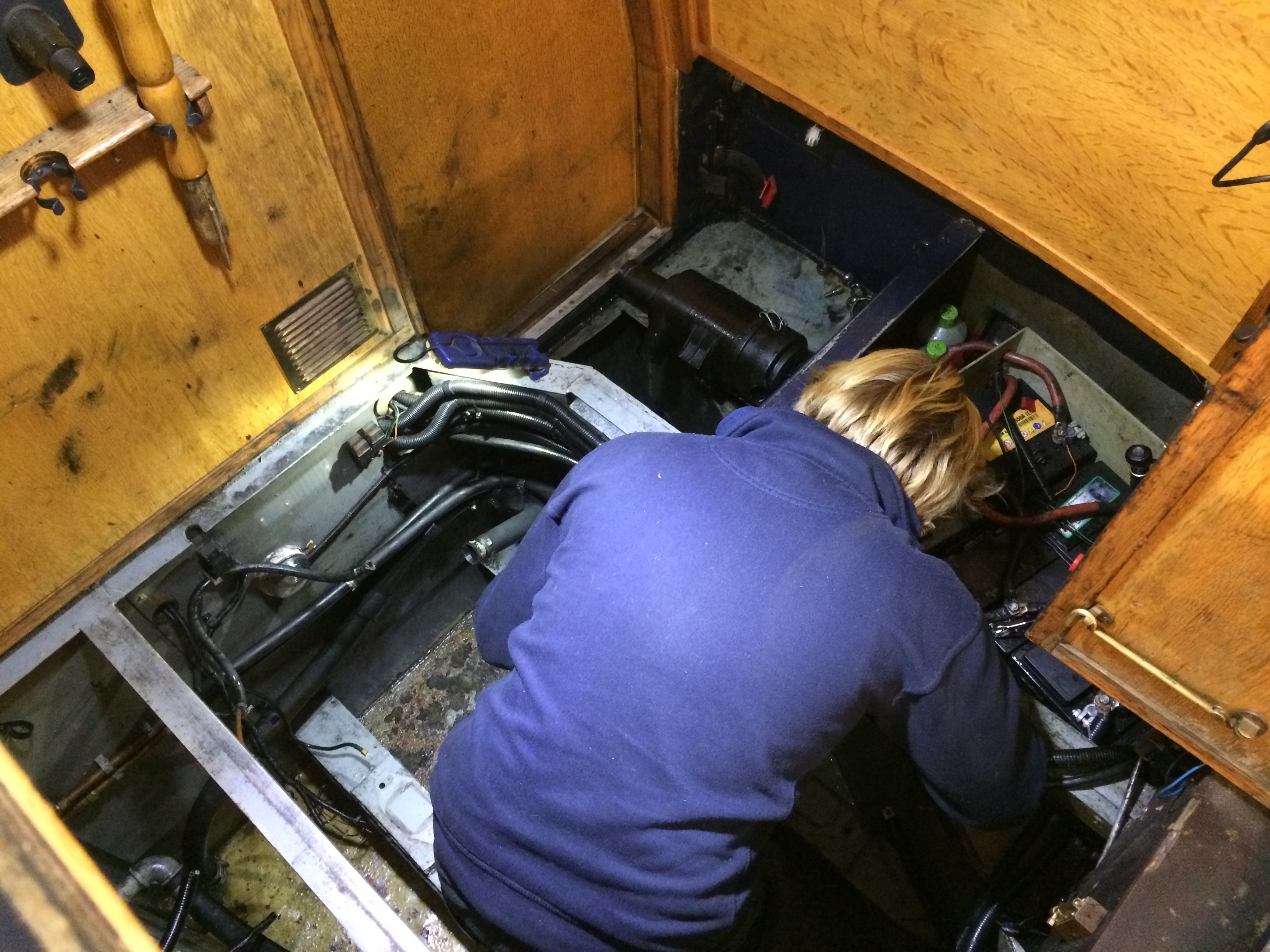Regular bilge inspections are crucial if you want to avoid flooding and potentially sinking your narrowboat. Good maintenance and preventing build up of water in the bilge will extend the life of your narrow boat.

Inspect and Maintain
Generally there are three bilge compartments on most canal boats; below the foredeck, below the accommodation cabin and below the engine bay. The engine bay may have a wet sump below the stern gland, which has been fabricated into a steel sump or receptacle to catch drips from the stern gland, but if this sump area hasn't been fabricated on the boat the engine bay may be wet due to a dripping stern gland and will need pumping out.
Learn how your boat was made, learn where the bilge compartments are and find out where the inspection hatches are to access the compartments. If there are no inspection hatches fitted, it's crucial to get some fitted. It is usually quite easy to install inspection hatches below saloon seating, so if there is an area that's difficult to see, it might be worth adding extra hatches to make it easier.
Automatic Bilge Pumps
When checking the bilges always make sure that they look clean and dry and check the automatic bilge pump works too, don't just assume it works. If the bilge pump is a float type, this is easy to check by lifting the float for a second until the pump runs, but only do this for a second, don't allow it to run dry. If you have a manually operated bilge pump, also test it, but we suggest getting an automatic one fitted. If the bilge is not working make sure to get it repaired or replaced as soon as possible. If you find that you haven't got one fitted we suggest that you get advice about getting one fitted.
Although an automatic bilge pump will not necessarily stop your boat from flooding, if you do find that your pump is continually running, take this as a warning as it's not normal, so investigate the cause and rectify it as soon as possible.
Engine Bay
The engine bay is usually the area which is most effected by water collecting and building up. Water often gets in from deck hatches that leak, especially during periods of rain. If possible deck drains should be kept clear and hatch covers close fitting to help avoid water trickling through gaps and down into the bilge. If a stern gland sump hasn't been fitted, it's a good idea to put a suitable container underneath to collect any drips from the stern gland.
Top Tips
- Learn where your bilge compartments are
- Learn where the inspection hatches are into the bilges, if none get some fitted
- Regularly check water inlets, if possible get them plated over and sealed off
- Inspect and maintain any outlets below the waterline each time the boat is blacked
- If the hull drains seem too close to the water line, get a surveyor to investigate
- Remember a bilge pump which is regularly discharging needs investigating to find out why - this is abnormal